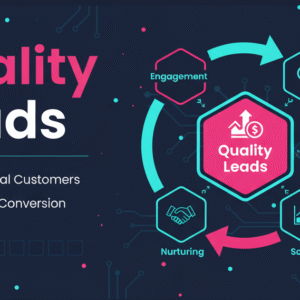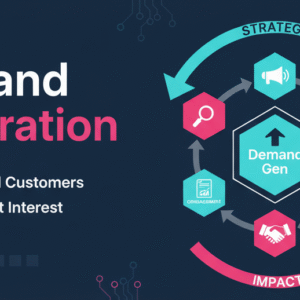Your SaaS landing page looks stunning. The gradient animations shimmer, and your copy sings. But when someone asks ChatGPT, “best customer data platforms for enterprise,” your brand is nowhere to be found. Meanwhile, your less-polished competitor shows up and gets the lead.
The problem isn’t your design or your product. It’s that your page was built for human readers in 2018, not AI systems in 2025. While you fine-tuned the hero section, competitors quietly rewrote their sites so AI platforms could understand and recommend them. Now they’re being cited in AI-generated answers, while your organic traffic keeps slipping.
Today, AI-readability is the new SEO. If AI systems can’t parse what you do, you’re invisible in the conversations where buying decisions start.
Why Jargon Kills AI Visibility
Most SaaS landing pages sound impressive to executives but confuse AI systems completely. Phrases like “revolutionize your operational paradigm” or “synergize cross-functional workflows” may sound strategic, but they obscure meaning.
AI language models struggle with three common SaaS copy issues:
- Vague Context. When you say “accelerate time-to-value,” AI doesn’t know if you’re a CRM, data warehouse, or project management tool. Humans infer context. AI needs explicit problem-solution connections.
- Industry Jargon. Phrases like “single source of truth” or “democratize data” are metaphorical and inconsistent across companies. AI can’t easily interpret them, so it skips over your content.
- Complex Structure. Sentences like “Insights are delivered to stakeholders through our proprietary analytics engine” make parsing difficult. Compare that to “You get instant analytics reports.” The latter is clear, active, and AI-friendly.
Research shows AI systems struggle most with ambiguity, evolving terminology, and implied context, all hallmarks of typical SaaS copy. The result? AI skips your page and cites competitors who describe what they do in plain, structured language.
Structure Your Page Like a Q&A
The best-performing AI-optimized landing pages follow a simple rule: write in a question-and-answer format.
How to apply this format:
- Use question-based headers. Instead of “Advanced Analytics Dashboard,” use “How do you track performance across multiple channels?”
- Answer directly below. Give a clear, extractable answer in 40-60 words. That’s your snippet-friendly response.
- Then expand. Add details and features as supporting evidence, framed around outcomes.
This approach satisfies both audiences: AI systems extract the clear answer, while humans get the proof points they need to convert.
Write conversationally, using customer language. If your users say, “help me stop churn,” don’t rewrite it as “enhance retention optimization.” Matching natural phrasing boosts your odds of being cited in voice and AI search.
Turn Your FAQ Into an AI Magnet
Most SaaS teams bury FAQs at the bottom of the page as an afterthought. That’s a mistake. When written strategically, FAQ sections are goldmines for AI visibility.
Why? Because FAQs mirror how AI systems think, question, then answer. Studies show FAQ-structured content increases AI visibility by 25% on average.
Here’s how to make your FAQs work:
- Source real questions from sales calls, support tickets, and tools like AnswerThePublic or AlsoAsked.
- Group by funnel stage.
- Awareness: “What is revenue intelligence?”
- Consideration: “How is revenue intelligence different from sales forecasting?”
- Decision: “How long does revenue intelligence setup take?”
- Lead with the short answer. Start with a 40-60 word summary (ideal for AI citation), then expand with context or examples.
- Add FAQ schema markup. This structured data tells AI, “Here’s a question and its definitive answer.” Pages with proper schema appear in AI answers 72% more often.
- Integrate FAQs throughout. Add Q&A pairs inside your pricing, features, and use-case sections instead of dumping them all at the end.
Done right, your FAQ becomes not just a conversion tool, but your Answer Engine Optimization (AEO) weapon.
Test and Track Your AI Search Optimization
Rewriting is only half the battle. You need to measure whether AI systems can find and cite your content. This is where AI search optimization (AISO) comes in, the new frontier of visibility tracking.
Start manually:
- Ask ChatGPT, Claude, Perplexity, and Google AI Overviews questions your page should answer, like “Best project management tool for remote teams” or “How to automate customer health scoring.”
- Note where you’re cited (or not) and how the platform describes your product.
Use an AISO Tool to Monitor Results
To manage this process systematically, use an AISO tool. Platforms like ReSO, Profound help you monitor how often your brand appears in AI-generated search results.
These tools track citation frequency, response position, and share of voice, key metrics for AI visibility. AISO tools essentially serve as the analytics engine for AI search optimization, helping you see how your content performs in AI Overviews, chatbots, and voice assistants.
- Treat AISO as the next evolution of SEO, focused on how AI searches, summarizes, and recommends products instead of how humans scroll through Google results.
- Set up tracking in Google Analytics 4 for AI referral sources like ChatGPT and Perplexity. Create segments for AI-driven traffic to measure engagement and conversions. AI referrals often convert better because users arrive pre-qualified by an AI recommendation.
- Run A/B tests to refine your content. Experiment with question phrasing, snippet length, or schema markup. Many SaaS teams see 40–60% increases in AI-sourced traffic within six months of implementing AISO tracking.
- Finally, monitor weekly. Check visibility scores, test high-value queries manually, and document competitor changes.
- Monthly reviews should connect AI visibility gains to pipeline impact, because AI-sourced visitors often convert faster and close at higher values.
AI platforms are now the discovery engines. If they can’t understand your landing page, your brand disappears from the answers shaping buyer decisions.





